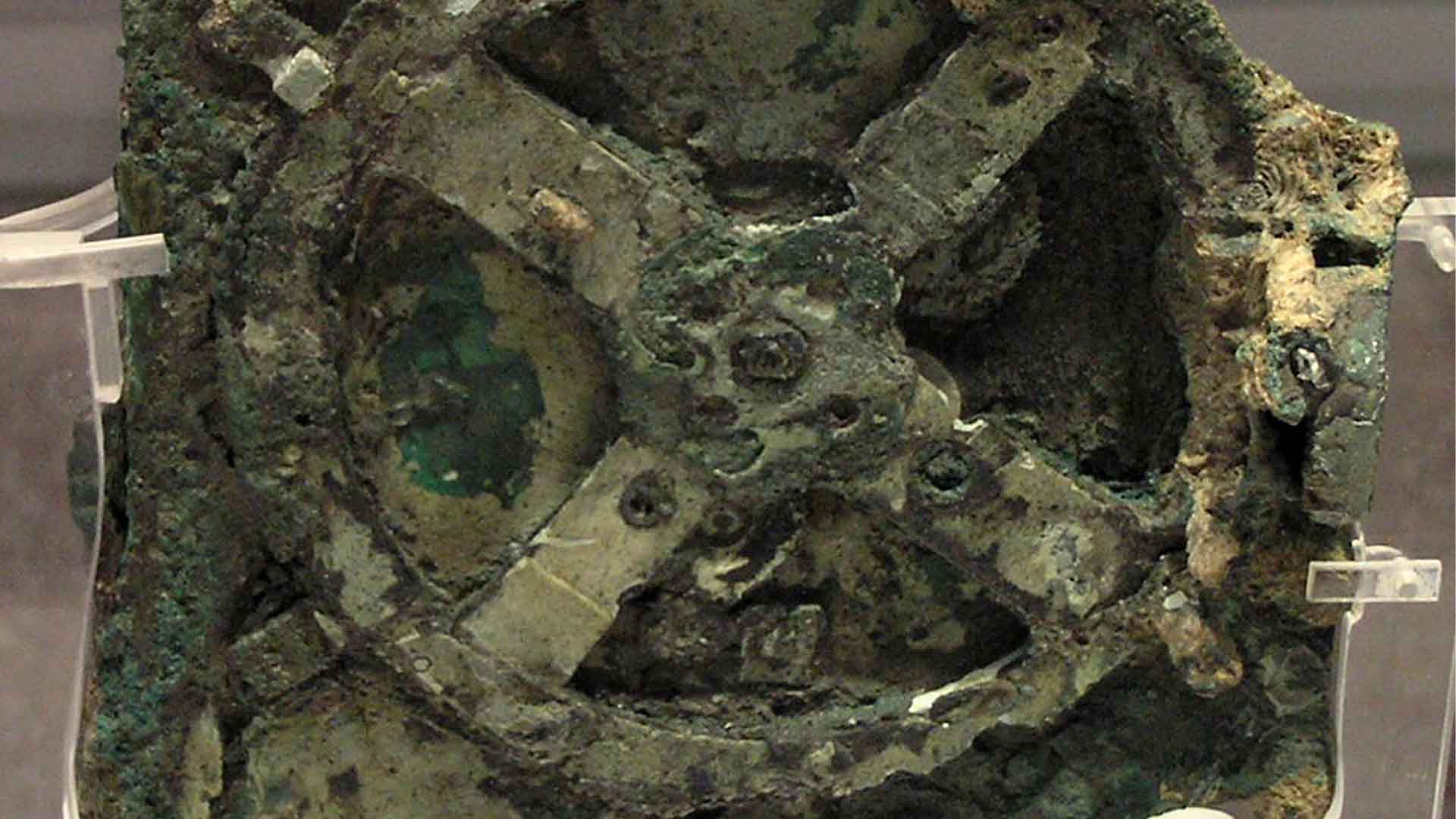Ancient Greek Calculator Reveals Lunar Calendar Secrets
In 1901, divers retrieved the Antikythera mechanism from a shipwreck near the Greek island of Antikythera.
This intricate device, often considered the first analog computer, astonished researchers with its complex gear system designed to track celestial events.
The Mystery of the Antikythera Mechanism
The Antikythera mechanism, dating back to around 100 BCE, used a sophisticated arrangement of gears and dials.

Source: Marsyas/Wikipedia
These components enabled it to predict astronomical phenomena such as solar eclipses and planetary movements with remarkable accuracy.
Cutting-Edge Research Sheds New Light
Recent studies have used insights from gravitational wave research to unlock more secrets of the Antikythera mechanism.

Source: Wikimedia
By analyzing statistical models derived from these cosmic ripples, scientists have gained a deeper understanding of the ancient device’s workings.
Gravitational Waves and Ancient Gears
Gravitational waves, caused by cataclysmic events like black hole mergers, provided a unique analytical framework for studying the mechanism.

Source: Wikimedia
This modern technique has helped researchers estimate the number of holes in the calendar ring, a crucial part of the device.
Precision Craftsmanship of Ancient Greeks
Joseph Bayley from the University of Glasgow praised the precision of the Antikythera mechanism’s construction.

Source: Wikimedia
The meticulous placement of holes required advanced measurement techniques and steady craftsmanship, highlighting the ingenuity of ancient Greek engineers.
Revealing the Calendar Ring
The calendar ring, a pivotal component of the mechanism, featured holes that aligned with lunar cycles.

Source: Eric Rothermel
Recent X-ray imaging revealed these holes, along with inscriptions detailing the motions of the sun, moon, and known planets.
Interdisciplinary Approach to Discovery
The 2021 study in Nature emphasized the interdisciplinary nature of the Antikythera mechanism, combining Babylonian astronomy, Platonic mathematics, and Greek theories.

Source: Freepik
This blend of knowledge provides insight into the advanced scientific understanding of its creators.
Lunar Calendar Evidence
The new study suggests the calendar ring contained 354 holes, corresponding to the 354 days of a lunar year.

Source: Wikimedia
This finding supports the theory that the mechanism followed a lunar calendar, reflecting the significance of lunar cycles in ancient cultures.
Role of Modern Technology
Advanced technology like computerized X-ray imaging has been instrumental in uncovering the details of the Antikythera mechanism.

Source: Wikimedia
These tools have provided clearer insights into the inscriptions and mechanical structure of this ancient marvel.
YouTuber's Contribution
YouTuber and machinist Chris Budiselic, through his channel Clickspring, has been building a replica of the Antikythera mechanism.

Brooke Cagle/Unsplash
His independent research and practical insights have contributed to understanding the device’s intricate construction.
Bayesian Statistics and Predictions
Bayesian statistics, a method of quantifying uncertainty based on incomplete data, played a key role in the recent analysis.

Source: Sanni Sahil/Unsplash
This technique helped predict the likely number of holes in the calendar ring, reinforcing the lunar calendar hypothesis.
A Glimpse into Ancient Astronomy
The Antikythera mechanism’s ability to track celestial events nearly two millennia ago demonstrates the sophisticated astronomical knowledge of ancient Greeks.

Source: Vincentiu Solomon/Unsplash
This discovery offers a fascinating glimpse into the early intersection of science and technology.
